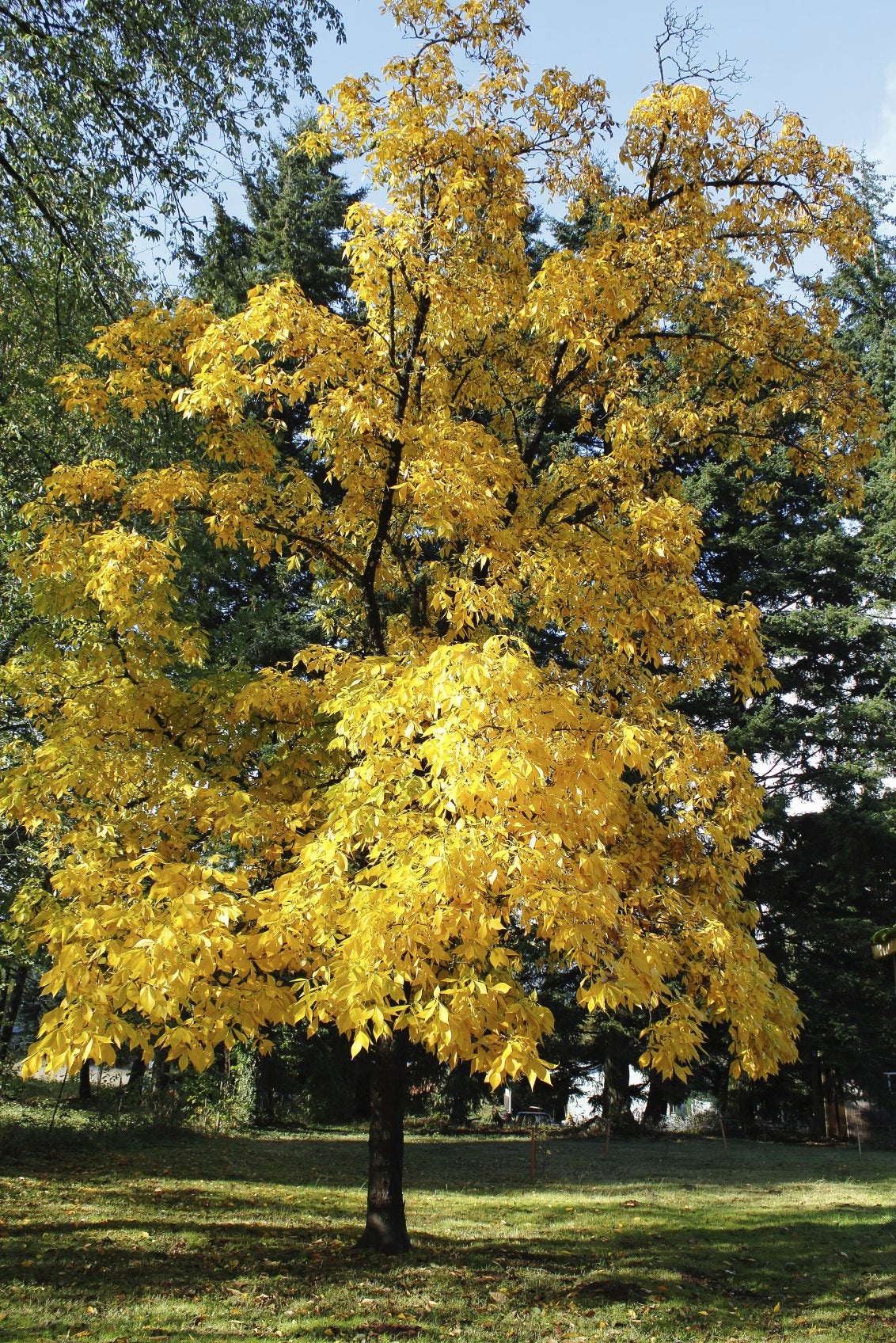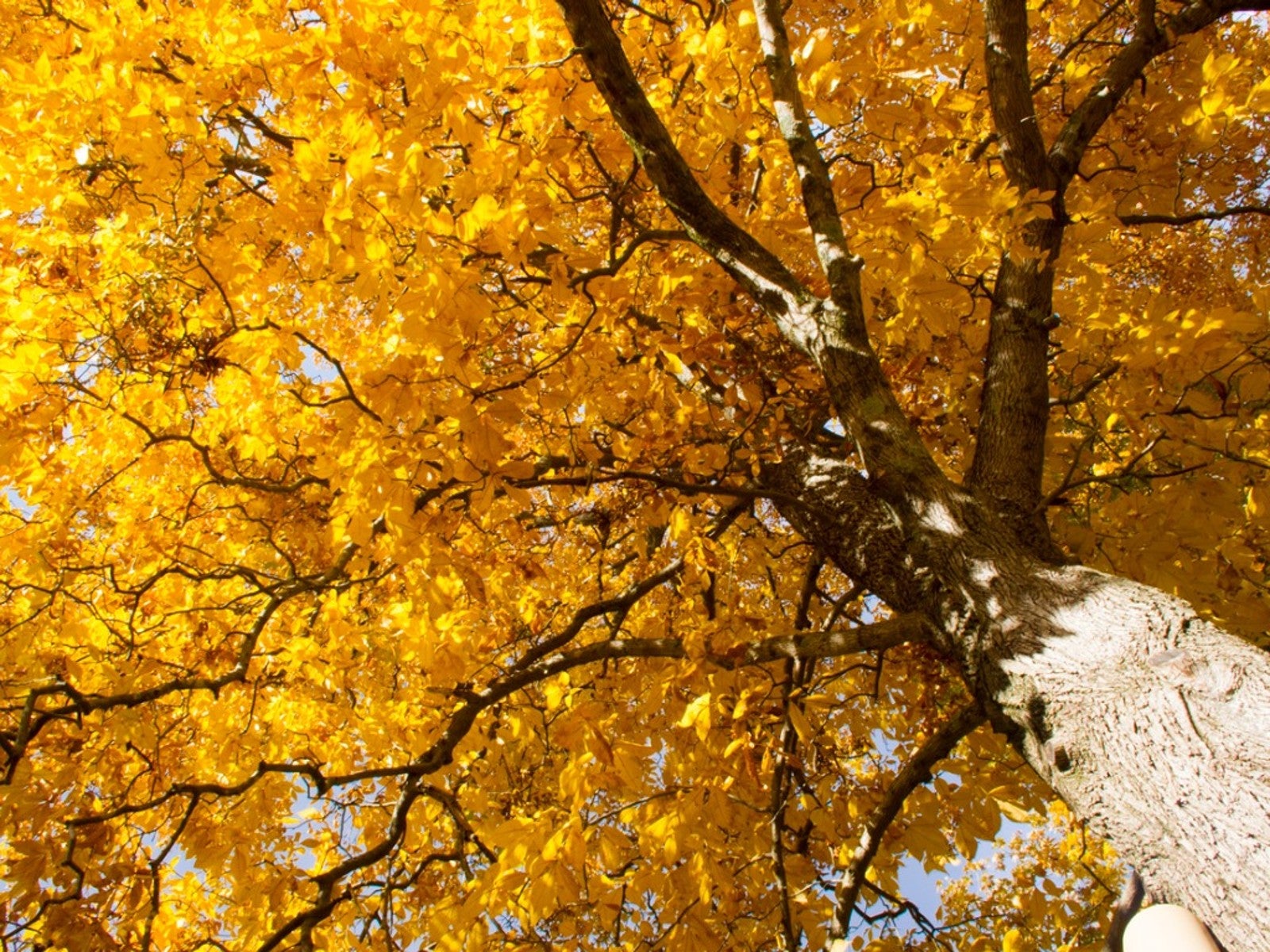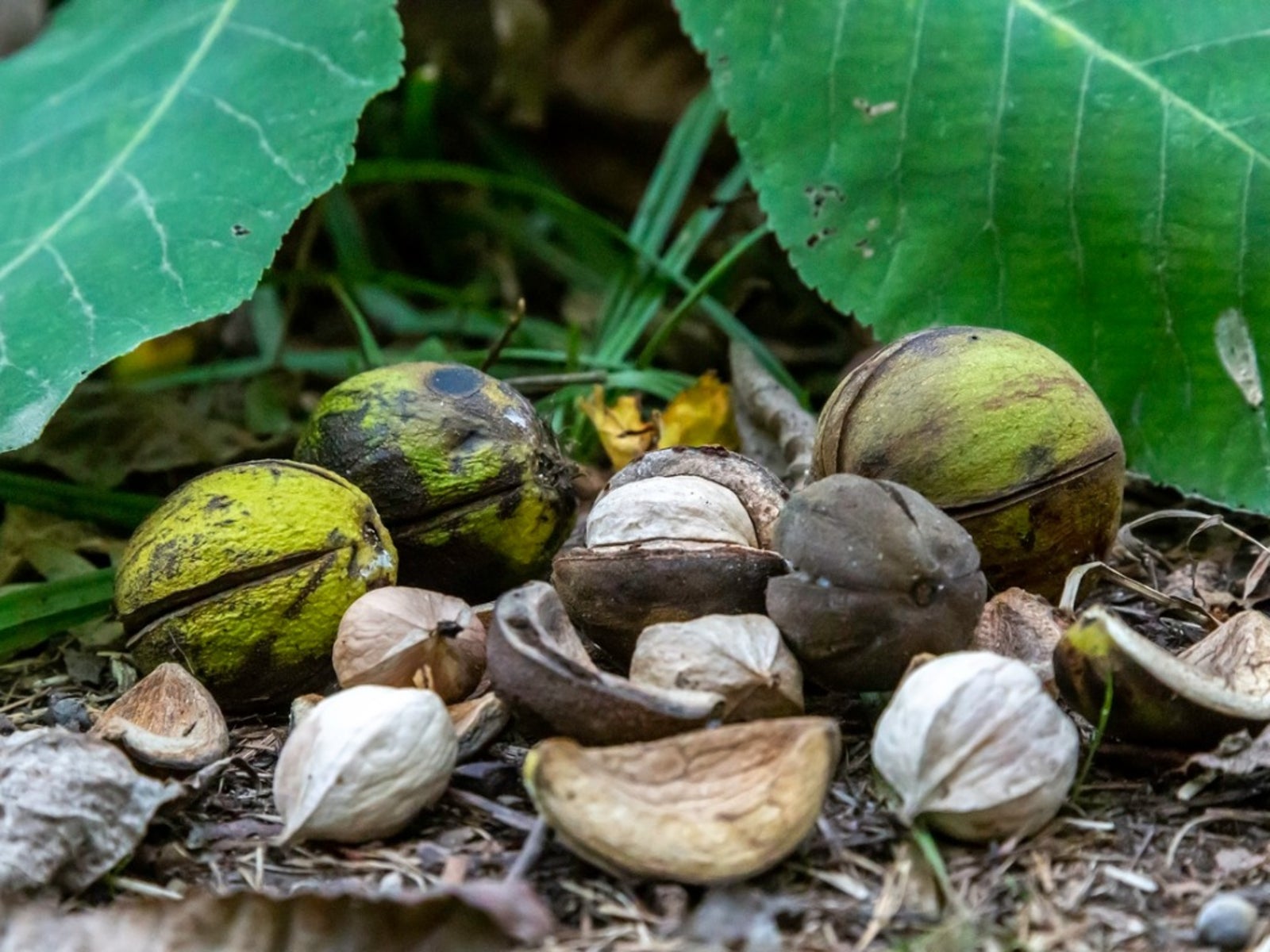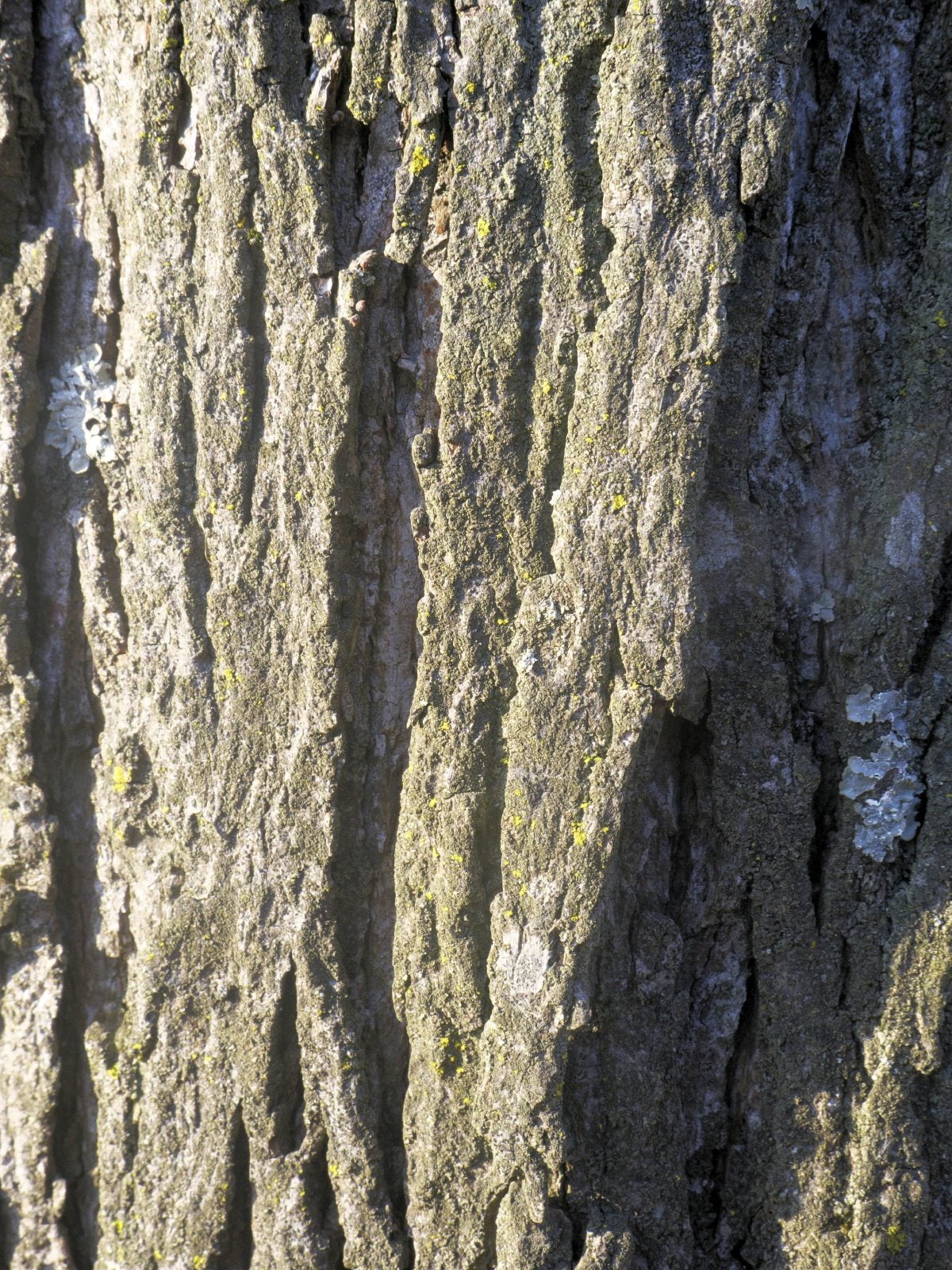Hickory Nut Tree Pruning: Tips On Pruning Hickory Trees


Pruning can be confusing for some gardeners. This is because there are separate rules for different plants, periods of the year, and even zones. Pruning hickory trees is not really necessary for fruit production once the trees are mature, but it is an important part of training the plant as it grows. Trimming a hickory tree when young promotes sturdier limbs and a better habit for future flowering and production.
Trimming a Hickory Tree When Young
Learning how to prune hickory trees during their early years is a crucial step for healthy trees and greater nut yield. Other reasons for hickory nut tree pruning might be aesthetics and ease of maintenance. Removal of broken or diseased stems over the tree's life can be done at any time but early training should occur when the tree is dormant. As with any tree pruning, sanitary practices and correct cut methods increase the benefits and reduce possible harm to the plant. Bearing trees and shrubs need a little guidance when they are babies. Young trees need to have onne or two good central leaders, which form a scaffold for the peripheral growth. Pruning hickory trees within their first or second year also allows the plant to develop good air circulation to reduce disease and pest issues. Nut production is best where trees receive good sunlight to the interior, promoting more blooms and, therefore, more fruit. Once the leader is established, remove any V-shaped growth which can become weak, but retain any U-shaped peripheral growth. This will reduce the chances of breakage that may invite disease and pest problems.
Mature Hickory Nut Tree Pruning
Trees started as seedlings may take 10 to 15 years to bear nuts. Those that you purchase as grafted plants can produce in as little as four to five years. During this period of growth before nut production, maintaining a strong, open canopy is key to future nut development. Once trees are established and have a healthy form, the only real pruning necessary is to remove weak, diseased, or damaged plant material. During the dormant period is the best time for such maintenance but you can remove damaged limbs at any time if they pose a hazard. Destroy diseased limbs but save any healthy wood for your fireplace or to cure for smoking.
How to Prune Hickory Trees Correctly
In addition to well-honed tools and clean surfaces, it is important to make cuts correctly. Never cut into the main stem when removing a limb. Cut just outside the branch collar, using a slight angle that will force moisture away from the newly cut surface. This helps prevent rot as the cut surface heals. If you are not taking a branch all the way back to the central stem, cut it back to a node. Avoid leaving branch stubs, which take longer to form wound wood and can reduce the appearance of the tree. Use the proper tool for different wood sizes. Loppers and pruners are generally only suited for removing wood that is ½ inch (1 cm.) or less in diameter. Larger branches will require a saw. Make the first cut on the underside of the branch and then finish the cut on the upper surface of the wood to reduce the chance of tearing the wood.
Gardening tips, videos, info and more delivered right to your inbox!
Sign up for the Gardening Know How newsletter today and receive a free copy of our e-book "How to Grow Delicious Tomatoes".

Bonnie Grant is a professional landscaper with a Certification in Urban Gardening. She has been gardening and writing for 15 years. A former professional chef, she has a passion for edible landscaping.
-
 Looking For Plants To Give You The Soft And Fuzzies? Try These 5 Fuzzy Leaf Plant Options
Looking For Plants To Give You The Soft And Fuzzies? Try These 5 Fuzzy Leaf Plant OptionsLovers of texture, drama, silver foliage and tactile plants will adore these special sensory garden additions. These fuzzy leaf plant options will leave you all aglow
By Susan Albert
-
 Get Ready For A Summer Of Hummers! Grow These Full Sun Hummingbird Plants and Flowers
Get Ready For A Summer Of Hummers! Grow These Full Sun Hummingbird Plants and FlowersIf you’re lucky enough to enjoy a sunny backyard, make sure you are maxing out on your pollinator opportunities and grow these full sun hummingbird plants and flowers
By Tonya Barnett
-
 Pignut Tree Characteristics And Care Instructions
Pignut Tree Characteristics And Care InstructionsWith a common name like “pignut hickory,” this is a tree that grabs your attention. And rightly so. Read on for more pignut tree info.
By Teo Spengler
-
 Hickory Nut Uses: Tips For Harvesting Hickory Nuts
Hickory Nut Uses: Tips For Harvesting Hickory NutsHickory nut harvesting is a fun, family activity that will provide you with a supply of these high-protein nuts to last through the winter. Learn more about harvesting hickory nuts in this article so you can reap all their benefits.
By Bonnie L. Grant
-
 Shagbark Hickory Tree Info: Caring For Shagbark Hickory Trees
Shagbark Hickory Tree Info: Caring For Shagbark Hickory TreesYou won't easily mistake a shagbark hickory tree for any other tree. Its bark resembles birch bark in color but hangs in long, loose strips. Caring for these tough trees is not difficult. Click this article for more shagbark hickory tree info.
By Teo Spengler
-
 About Hickory Trees - Tips For Growing A Hickory Tree
About Hickory Trees - Tips For Growing A Hickory TreeHickories are an asset to large landscapes and open areas, though their large size makes them out of scale for urban gardens. read this article to learn more about growing a hickory tree.
By Jackie Carroll